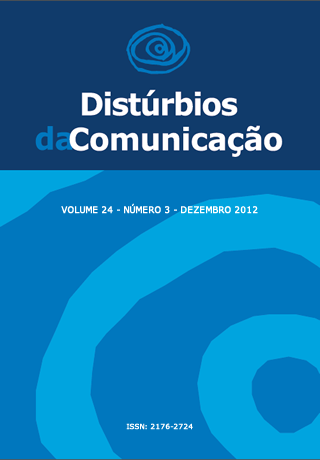The communication of people with deafblindness and the work of SpeechLanguage Pathology.
Keywords:
deaf-blind disorders, communication, speech language and hearing sciences, special education.Abstract
This study aims to present the deafblindness, its conceptualization, classifi cation, etiology, the communication ways, the role of guide-interpreter, the process of orientation and mobility, the importance of family involvement, the rehabilitation processes and its role in the development and in the life of people with deafblindness. For the speech therapeutic, to know the impact that visual and hearing impairments have in language and the forms of communication that may be established are aspects extremely important to the design of new areas of actuation and to develop therapeutic and educational programs.Downloads
Download data is not yet available.
Metrics
Metrics Loading ...
Downloads
Published
2012-12-30
Issue
Section
Communication
License
Copyright (c) 2012 Denise C. Villas Boas, Léslie P. Ferreira, Maria Cecília de Moura, Shirley R. Maia

This work is licensed under a Creative Commons Attribution 4.0 International License.









